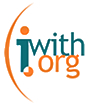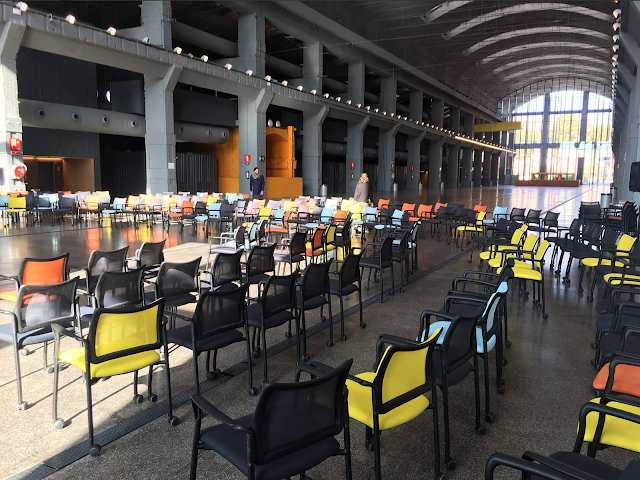iWith.org and Nantik Lum start to work together
At iWith.org we celebrate our collaboration with Nantik Lum, a foundation based in Madrid that promotes social entrepreneurs and entrepreneurship entities through microfinance.
Nantik Lum is a foundation based in Madrid that works on different projects. One of them is the Avanza program, which aims to recommend unemployed people who aspire to become self-employed entrepreneurs. Through the Avanza program, the foundation accompanies them, above all, in financing issues through microcredits.

What does iWith.org contribute to Nantink Lum?
We offer our Abcore Cadí platform for the web page of its Avanza program. In its platform we will add a Moodle campus in which the entrepreneur Avanza users of Nantik Lum can train and develop their online business plan.
iWith.org and Nantik Lum start to work together
At iWith.org we celebrate our collaboration with Nantik Lum, a foundation based in Madrid that promotes social entrepreneurs and entrepreneurship entities through microfinance.
Nantik Lum is a foundation based in Madrid that works on different projects. One of them is the Avanza program, which aims to recommend unemployed people who aspire to become self-employed entrepreneurs. Through the Avanza program, the foundation accompanies them, above all, in financing issues through microcredits.

What does iWith.org contribute to Nantink Lum?
We offer our Abcore Cadí platform for the web page of its Avanza program. In its platform we will add a Moodle campus in which the entrepreneur Avanza users of Nantik Lum can train and develop their online business plan.

North American organization Nonprofit Tech fo Good has released a report regarding NGOs and the use of technology and social networks in a global scale.
Among the international organizations that have taken part in the report…

- 92% of them have a website.
- 68% of them use the .org domain, which already has more than 10.3 million registered users.
- Mailing is the common cannel of cummunication, but 18% of them use mobile applications and 15% use mobile messaging.
- Compared to 2017, the use of online funding platforms has increased a 5% among non-lucrative associations. 72% of the NGOs that took part in the report use them.
- 95% agree on the importance of social network, but only 32% has a strategic communication plan.
- Facebook page (93%) Twitter account (77% ) and Youtube account (57%).
- 80% of NGOs trust Microsoft Windows when it comes to computers and Apple iOS when it comes to phones and tablets.
- Only 41% use encryption to protect their data.
Differences in the use organizations do of technology by continent
In Africa
- 74% of NGOs have a website (compared to a global 92%).
- 55% (compared to a global 72%) have an online donation platform.
- To contact their donors they use: WhatsApp (69%), Facebook Messenger (52%), Viber (4%).
- Facebook page (85%) Twitter (62%) Linkedin (39%).
- Google Android is the most popular system.
In Asia
- 81% have a website, and 86% of them have a mobile version.
- Compared to 2017, the use of donation platforms has spreaded 9%: nowadays, 56% of Asian organizations have an online donation platform.
- To contact their donors they use: WhatsApp (69) Facebook Messenger (52%) Viber (9%).
- Facebook (86) Twitter (62%).
- 62% trust Google Android.
In Europe
- 97% have a website, and 86% of them have a mobile version.
- 59% of the European organizations that took part in the report accept donation online.
- To contact their donors they use e-mail: only 17% of them use mobile apps for their organization, especially WhatsApp.
- Facebook (94%), Twitter (80%), LinkedIn (58%).
In North America
- 98% have a website, and 88% of them have a mobile version.
- 56% of the North American organizations that took part in the report accept donation online, the same as Asian organizations.
- Facebook (97%), Twitter (85%), LinkedIn (63%) and Instagram (61%).
- To contact their donors they use e-mail: only 10% use mobile apps like WhatsApp and Snapchat.
In South America
- 88% have a website, and 87% has a mobile version.
- 56% of the North American organizations that took part in the report accept donation online.
- To contact their donors, 40% of them use mobile apps instead of using e-mails.
- Facebook (98%), Twitter (71%), Instagram (55%) i LinkedIn (41%).
What can we learn from it?
Globally, organizations still have a long way to go about the usage of free code OS such as Linux-Ubuntu. Almost all organizations use Microsoft instead, and there is a general lack of interest in data encryption and cyber security.
On the other hand, if we compare the Asian case with the African case we notice that Asian organizations use technology only slightly more than the African ones. This is strange if we think how technology has become much important in many Asian countries, and it may imply that, unlike Asian companies, Asian non-lucrative organizations are still disconnected.
When it comes to social networks, the usage of Facebook is remarkable in worldwide organizations. Both in North America and South America the social networking is diverse, even if Facebook remains the leading channel. The usage of a wider range of social networks should globally offer better audience results. However, from iWith.org we recommend small organizations to concentrate their efforts in a couple of social networks and not trying to update many of them in the same time.

North American organization Nonprofit Tech fo Good has released a report regarding NGOs and the use of technology and social networks in a global scale.
Among the international organizations that have taken part in the report…

- 92% of them have a website.
- 68% of them use the .org domain, which already has more than 10.3 million registered users.
- Mailing is the common cannel of cummunication, but 18% of them use mobile applications and 15% use mobile messaging.
- Compared to 2017, the use of online funding platforms has increased a 5% among non-lucrative associations. 72% of the NGOs that took part in the report use them.
- 95% agree on the importance of social network, but only 32% has a strategic communication plan.
- Facebook page (93%) Twitter account (77% ) and Youtube account (57%).
- 80% of NGOs trust Microsoft Windows when it comes to computers and Apple iOS when it comes to phones and tablets.
- Only 41% use encryption to protect their data.
Differences in the use organizations do of technology by continent
In Africa
- 74% of NGOs have a website (compared to a global 92%).
- 55% (compared to a global 72%) have an online donation platform.
- To contact their donors they use: WhatsApp (69%), Facebook Messenger (52%), Viber (4%).
- Facebook page (85%) Twitter (62%) Linkedin (39%).
- Google Android is the most popular system.
In Asia
- 81% have a website, and 86% of them have a mobile version.
- Compared to 2017, the use of donation platforms has spreaded 9%: nowadays, 56% of Asian organizations have an online donation platform.
- To contact their donors they use: WhatsApp (69) Facebook Messenger (52%) Viber (9%).
- Facebook (86) Twitter (62%).
- 62% trust Google Android.
In Europe
- 97% have a website, and 86% of them have a mobile version.
- 59% of the European organizations that took part in the report accept donation online.
- To contact their donors they use e-mail: only 17% of them use mobile apps for their organization, especially WhatsApp.
- Facebook (94%), Twitter (80%), LinkedIn (58%).
In North America
- 98% have a website, and 88% of them have a mobile version.
- 56% of the North American organizations that took part in the report accept donation online, the same as Asian organizations.
- Facebook (97%), Twitter (85%), LinkedIn (63%) and Instagram (61%).
- To contact their donors they use e-mail: only 10% use mobile apps like WhatsApp and Snapchat.
In South America
- 88% have a website, and 87% has a mobile version.
- 56% of the North American organizations that took part in the report accept donation online.
- To contact their donors, 40% of them use mobile apps instead of using e-mails.
- Facebook (98%), Twitter (71%), Instagram (55%) i LinkedIn (41%).
What can we learn from it?
Globally, organizations still have a long way to go about the usage of free code OS such as Linux-Ubuntu. Almost all organizations use Microsoft instead, and there is a general lack of interest in data encryption and cyber security.
On the other hand, if we compare the Asian case with the African case we notice that Asian organizations use technology only slightly more than the African ones. This is strange if we think how technology has become much important in many Asian countries, and it may imply that, unlike Asian companies, Asian non-lucrative organizations are still disconnected.
When it comes to social networks, the usage of Facebook is remarkable in worldwide organizations. Both in North America and South America the social networking is diverse, even if Facebook remains the leading channel. The usage of a wider range of social networks should globally offer better audience results. However, from iWith.org we recommend small organizations to concentrate their efforts in a couple of social networks and not trying to update many of them in the same time.

Una vez más, reactivando un sueño compartido.
Los retos, las dificultades y las cosas imposibles siempre están ahí.
Pero tenemos un sueño hermoso y ambicioso que quizás se podría resumir
en esta cita de de Amador Fernández-Savater:
“No pensar en “salir de la crisis“, sino abrir en ella una bifurcación. Convertir la “crisis civilizatoria” en “mutación civilizatoria“.
No agarrarse desesperadamente a algo, sino emprender un viaje. No
contener el derrumbe, ni soñar con revertirlo para volver donde
estábamos, sino abrir y sostener otros mundos aquí y ahora: otros modos
de relación con el trabajo, el cuerpo, el lenguaje, la tierra, la
ciudad, el nosotros, etc. Aprovechar la crisis, hacer palanca en la
fuerza vulnerable… …Una oposición que no es sólo ideológica o
partidista, que no es sólo defensiva o resistencialista (aunque por
supuesto haya muchísimas cosas que defender), sino sobre todo afirmativa
y de paradigma, con planteamientos (teóricos y prácticos) de mutación
civilizatoria en torno al trabajo, los cuidados, la familia, las
relaciones, etc. Un mundo solo se para con otro mundo.”
Esto nos lo contó ayer Fernando Prats del Foro de Transiciones en el cierre de Quorum Global.
Un espacio de encuentro que nos superó: 250 personas inscritas para
dialogar y compartir cómo andamos de aferradas a este sueñito que
cambia y coge formas diversas con los años, pero que de repente nos hace
compartir un techo y las ganas de seguir empujando.
Para
nosotras, este grupito de soñadoras empeñadas en mantener Quepo a
flote, está siendo un reto poner todo lo que hemos aprendido estos años
al servicio de este diálogo imprescindible que nos tiene que hacer (como
ayer rezaban los hashtags) Reconectarnos, repensarnos y repolitizarnos
(y añadiría requetecuidarnos) para hacer el sueño posible. Reto
asumido, sueño compartido y unas ganas enormes de seguir acompañando y
facilitando este diálogo.
Vamos de ida, no de vuelta.
Nos queda mucho por construir pero a mi y a mis ambiciones les encantó
sentiros ahí ayer. En lo presencial y en lo virtual. Gracias!
Vamos con las conclusiones, en directo con @lamarea_com aquí!https://t.co/aPplv8WHKh#QGesReconectar#QGesRepolitizar#QGesRepensar— QuorumGlobal (@QuorumGlobal) 24 de enero de 2018
L'entrada Una vez más, reactivando un sueño compartido. ha aparegut primer a Quepo | Comunicació per a la transformació social.








